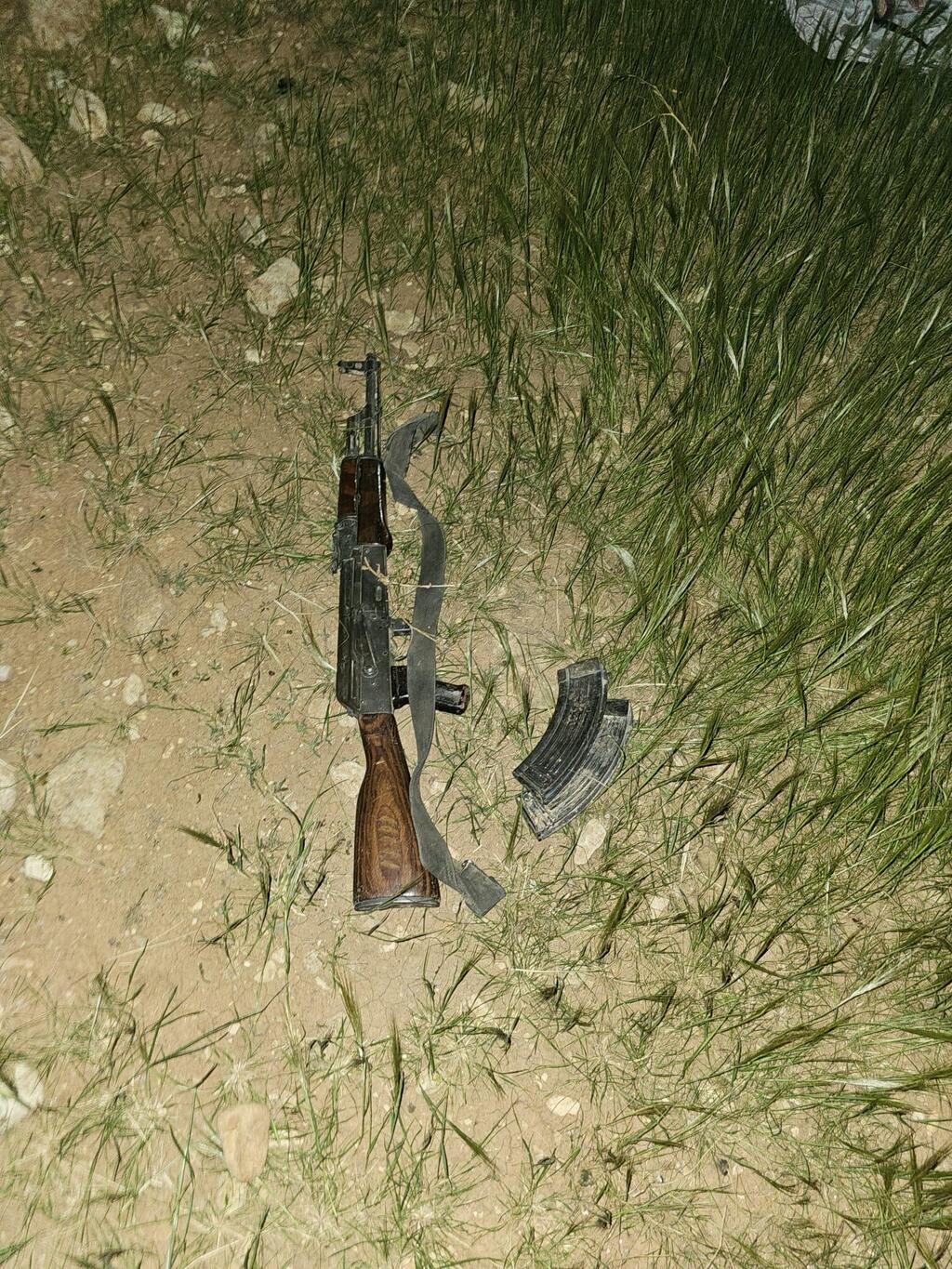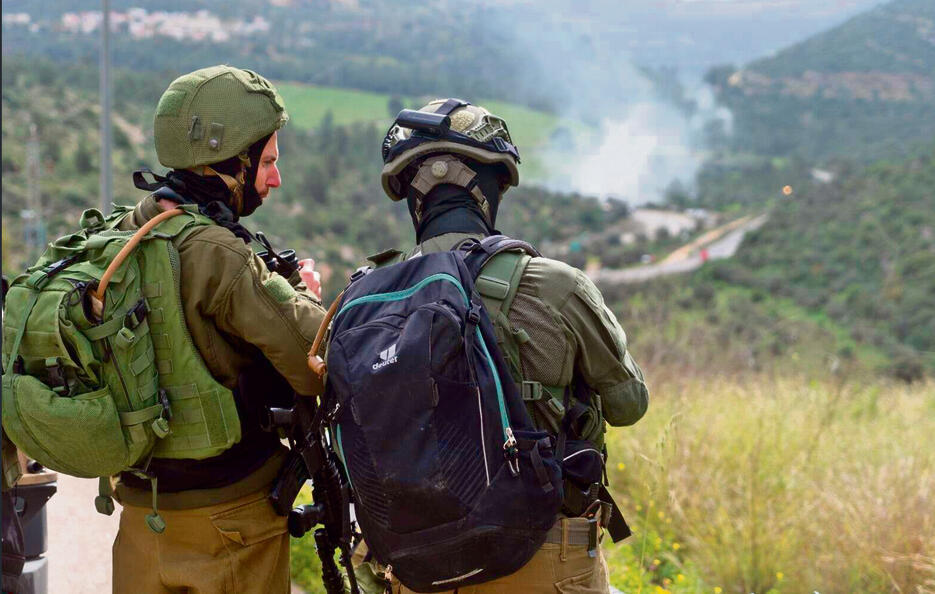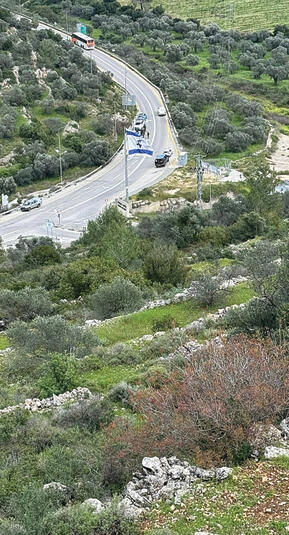After the reduction of IDF forces in Gaza, 18 battalions are currently operating in the Strip. In contrast, there are 20 battalions currently stationed in the West Bank. These numbers alone highlight the fact that the area has seen a significant increase in terrorism originating in the West Bank and along the Jordanian border. Two recent terror attacks in the West Bank serve to underscore once again the magnitude of the challenge.
The first incident took place on Friday near the Talmon-Dolev Junction close to Ramallah. According to an initial investigation of the attack, the terrorist Mujahed Barakat Mansour opened fire on a minibus in the area using a sniper rifle. No injuries were reported in the attack.
He continued to shoot at forces who arrived at the scene and were unaware that he was using a sniper rifle positioning themselves lower than the assailant, and thereby exposed resulting in the death of Sergeant Major Ilay David Garfinkel and seven other soldiers injured. He was finally shot and killed by a strike from a military chopper.
An investigation of the incident pointed to the failure of the military after forces were exposed to the terrorist - allowing him to shoot from a precise distance of 290 meters.
In the image now released by Ynet, the location of the obviously highly trained terrorist can be seen and the direct line he had to the exact point where forces were concentrated without proper cover.
The military was investigating why the force was exposed to the terrorist and whether this could have been prevented despite the difficult terrain, while other questions involve the operation and coordination of attack helicopters and unmanned aerial vehicles (UAVs) used by the IDF.
For example, the military would have to investigate whether the image taken by the UAV could have been transmitted to the attack helicopter that failed to identify and engage the terrorist from the air.
Despite the failure in the Friday incident, Security forces on the West Bank have arrested over 3,600 suspected terrorists, some 1,600 of them affiliated with Hamas and confiscated a substantial amounts of military equipment since the start of the war.
Thanks to operations in the area and some luck, they have neared the end of the holy month of Ramadan with a relatively low casualty count compared to the potential for violence and the high level of alert amid war.
In the second incident that took place in the Jordan Valley, which was supposed to end even quicker, two armed terrorists who infiltrated from Jordan two days earlier armed with AK-47 rifles were arrested on Friday evening.
Footage of IDF UAV eliminating terrorist sniper
(Video: IDF Spokesperson's Unit)
They were identified by the Petza'el settlement's security chief - who arrested them without resistance. During the investigation the two were found to be former residents of the Gaza Strip.They told their interrogators that they planned to carry out an attack in Jaffa.
In the past two years, and particularly in 2023, the IDF has been warning of the escalation along the Jordanian border and the increase in the number of terror cells attempting to breach the long border fence stretching from Eilat to the Syrian border. This frontier has many breaches and must be sealed by building a smart barrier and using surveillance equipment.
While the Defense Ministry has formulated two plans for building the barrier from the Ramon Airport in the south, up to the Sea of Galilee in the north, at a cost of billions, at the moment, the government has yet to approve its budget and the project cannot proceed through the Knesset committee assigned to examine Israel’s security budget following the October 7 massacre. Those discussions have been delayed amid disputes between Finance Minister Bezalel Smotrich and Defense Minister Yoav Gallant.
In any case, the committee has yet to convene, and Prime Minister Benjamin Netanyahu avoids making a decision on the matter ignoring the crucial lessons that should have been learned after the failings that prompted the war.
3 View gallery


Weapon seized by security forces near the Petza'el settlement
(Photo: IDF Spokesperson's Unit)
Meanwhile, the IDF is forced to increase the number of forces holding the line along the Jordanian border, with the burden on becoming heavier. This puts a mirror to the IDF’s requirement of more soldiers especially as the extent of force in Gaza and the West Bank keeps changing.
As was reported on Ynet in February, the IDF needs approximately 7,000 soldiers in the immediate future. The military can’t continue to hold discharged soldiers in reserve frameworks, both due to the heavy economic price and because it isn’t right and isn’t included in the ultra-Orthodox conscription law that must be passed quickly, and include not only the extension of service in the military but also the number of ultra-Orthodox soldiers to enlist in order to ease the burden in the military.






